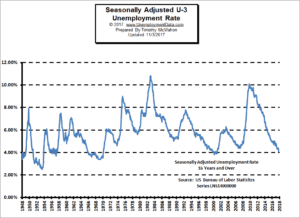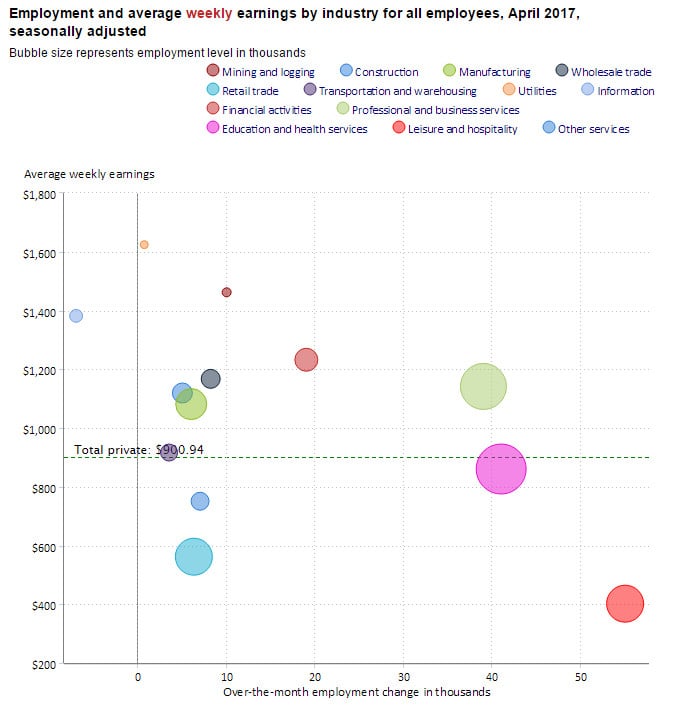The U.S. Bureau of Labor Statistics (BLS) released their monthly employment survey results for the month of March on Friday April 6th .
According to the BLS the Seasonally Adjusted U-3 Unemployment Rate is unchanged for the 6th month in a row. So from October through March the Seasonally Adjusted Unemployment rate has been 4.1%. This month the unadjusted U-3 was also 4.1%.
Many Experts consider this to be the new “Full Employment” level i.e. everyone who wants a job has found one however with the Labor Force Participation rate still well below the average that is debatable. See Is the U.S. Really at “Full Employment”? for more information.
Key March Employment and Unemployment Numbers
- Adjusted U-3 Unemployment- 4.1% unchanged since October.
- Unadjusted U-3 Unemployment- 4.1% down from 4.4% February.
- Unadjusted U-6 Unemployment- 8.1% down from 8.6% in February.
- Employment 147,332 million up from 146.667 million in February and 145.473 million in January but down from 148.346 million in December and 148.526 million in November.
- Gallup has discontinued publishing U-6 & U-3 numbers.
See Current Unemployment Chart for more info.
Employment by Sector
The employment “bubble chart” gives us a good representation of how each sector of the economy is doing (employment wise). As we can see from the chart below three sectors are to the left of the zero line this month indicating that all other sectors gained employees in March except Construction which lost -15,000 employees, Retail which lost -4,400 employees, and “Other Services” which lost -1,000 employees on a “Seasonally Adjusted” basis.
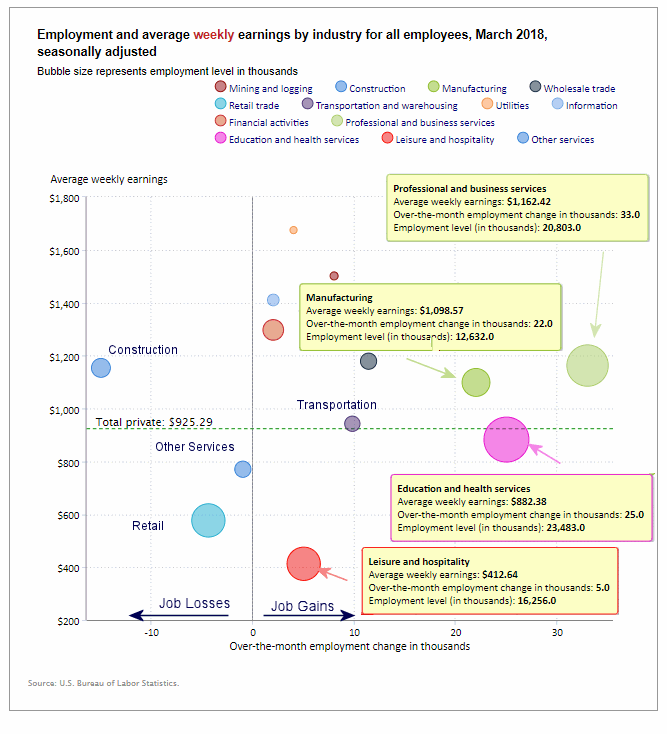
(See the table below the chart for average weekly earnings and other details.)
How to read this chart:
Bubbles location on the chart tell us two things:
- Change in Employment Levels over the most recent month.
- Average Weekly earnings.
- The further to the right the bubble the larger the increase in the number of jobs.
- The higher up on the chart the larger the average salary.
Bubble Size tells us:
- Total Employment for the sector.
- Larger bubbles mean more people are employed in that sector.
Employment and Average Weekly Earnings by Industry for All Employees
March 2018, Seasonally Adjusted
| Industry | Monthly Increase | Average Weekly Earnings | Employment Level |
| Total Private Employment | 102,000 | $925.29 | 125,904,000 |
| Mining and Logging | 8,000 | $1,501.44 | 722,000 |
| Construction | -15,000 | $1,153.66 | 7,150,000 |
| Manufacturing | 22,000 | $1,098.57 | 12,632,000 |
| Wholesale trade | 11,400 | $1,178.97 | 5,967,300 |
| Retail trade | -4,400 | $576.58 | 15,915,900 |
| Transportation and Warehousing | 9,800 | $942.35 | 5,279,300 |
| Utilities | 4,000 | $1,674.74 | 559,000 |
| Information | 2,000 | $1,410.43 | 2,760,000 |
| Financial Activities | 2,000 | $1,297.20 | 8,546,000 |
| Professional and Business Services | 33,000 | $1,162.42 | 20,803,000 |
| Education and Health Services | 25,000 | $882.38 | 23,483,000 |
| Leisure and Hospitality | 5,000 | $412.64 | 16,256,000 |
| Other Services | -1,000 | $770.31 | 5,830,000 |
U-6 Unemployment
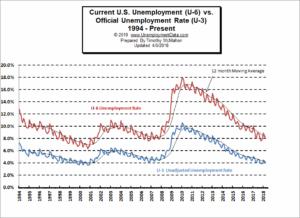
See Unadjusted U-6 unemployment for more info.
Employment
Over the last month, the actual number of people working (not seasonally adjusted) has increased by 665,000 jobs in March. The BLS Commissioner said:“ Nonfarm payroll employment edged up by 103,000 in March, following a large gain in February (+326,000)…
Over the month, job gains occurred in manufacturing, health care, and mining… Manufacturing employment rose by 22,000… Employment in health care increased by 22,000 in March and has grown by 304,000 over the year…. Mining employment rose by 9,000… Employment in professional and business services continued to trend up in March (+33,000). Over the year, employment in the industry has increased by 502,000, with gains distributed across most of the component industries.” [Read more…] about March Employment Tops 147 Million

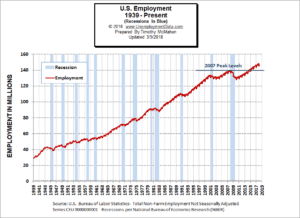
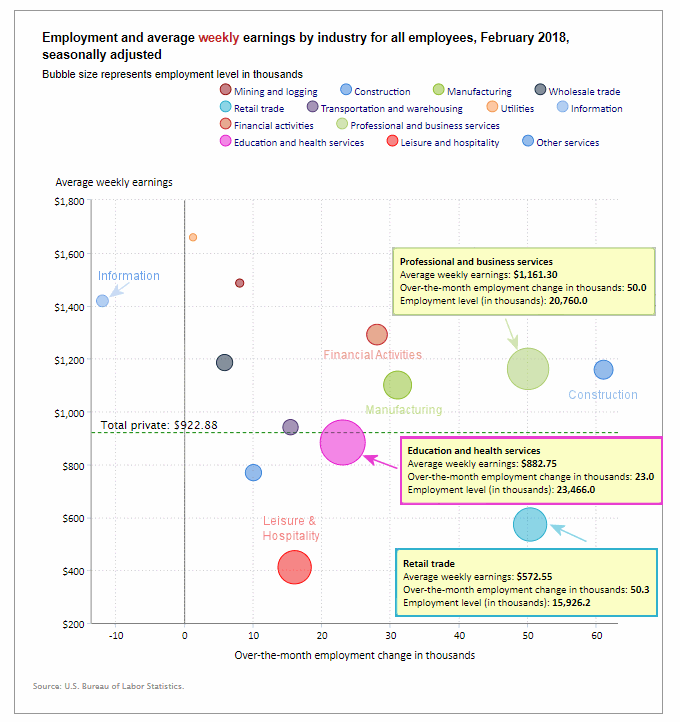
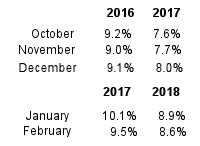
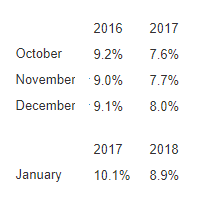 Over the same period, Unadjusted U-6 unemployment which is a broader measure of Unemployment including discouraged workers, climbed steadily.
Over the same period, Unadjusted U-6 unemployment which is a broader measure of Unemployment including discouraged workers, climbed steadily.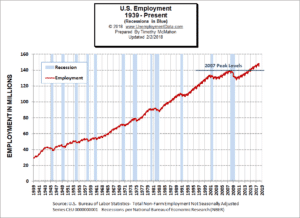 Over the last month, the actual number of people working (not seasonally adjusted) has decreased by
Over the last month, the actual number of people working (not seasonally adjusted) has decreased by 